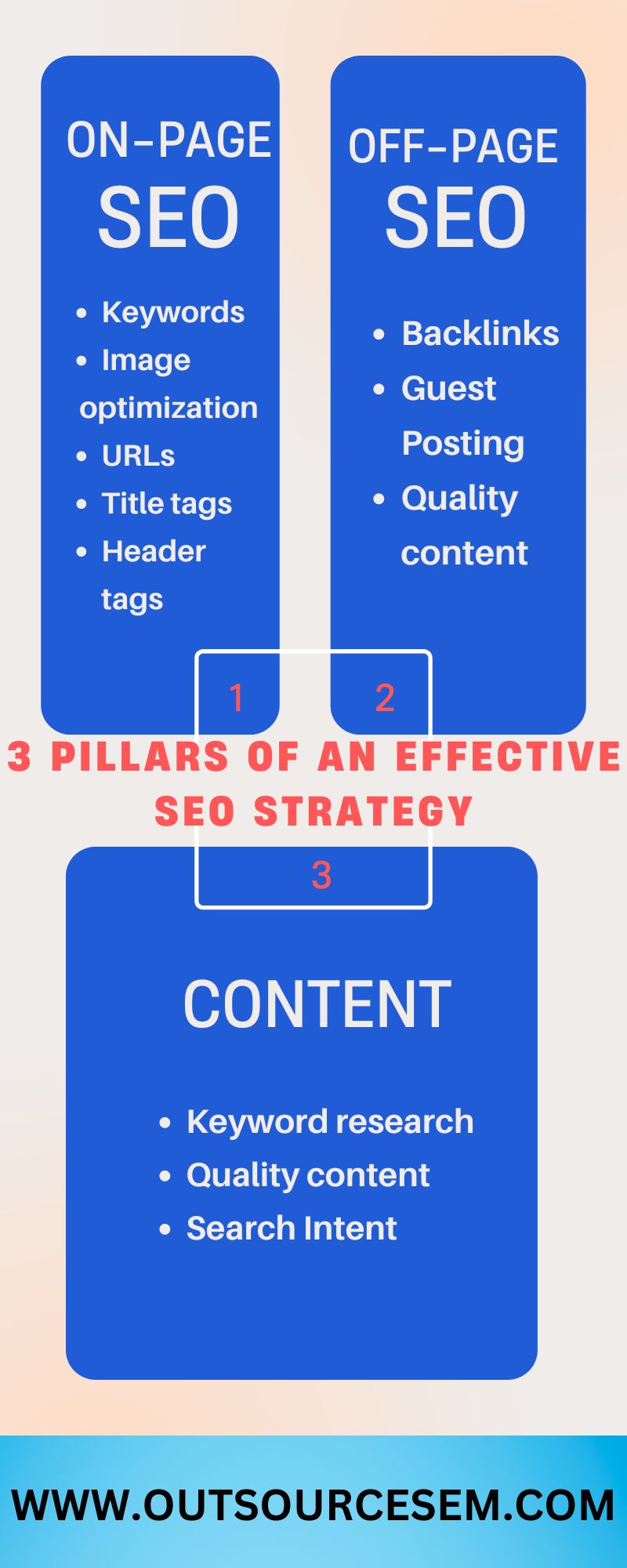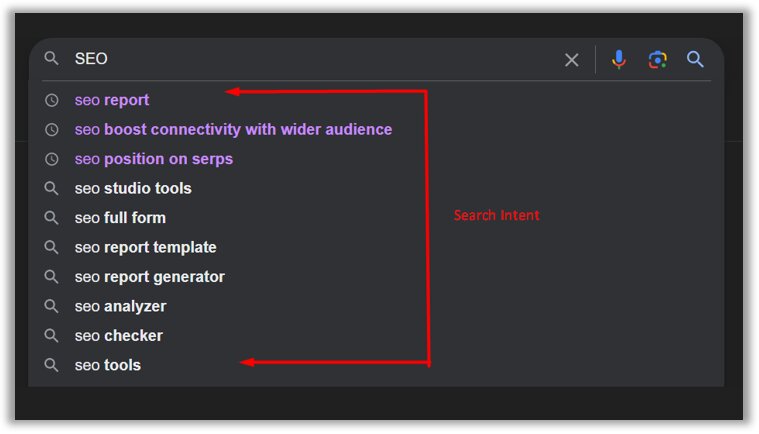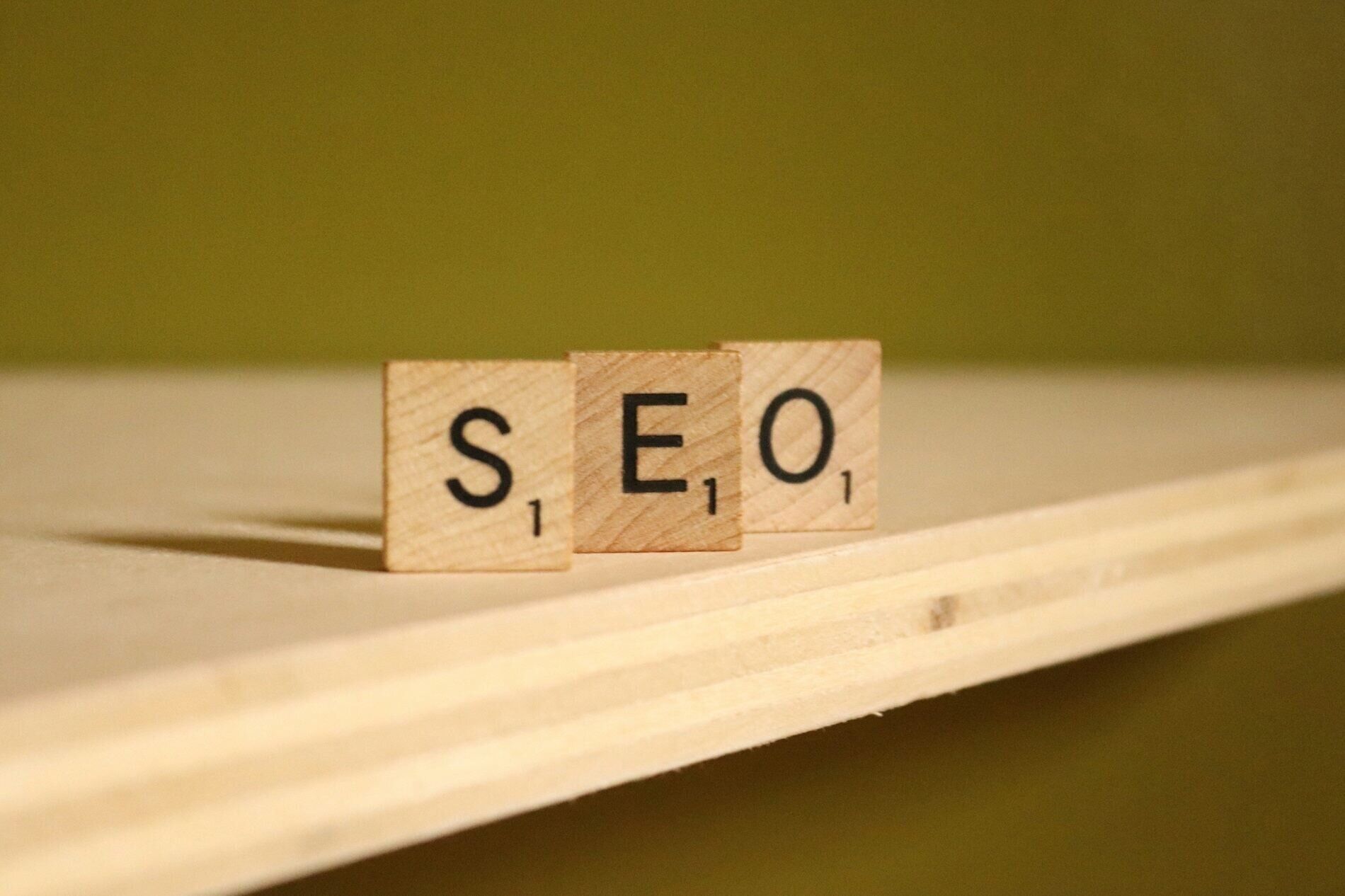As the number of websites on search engines continues to surge, the landscape of online visibility has become increasingly challenging and intricate. With heightened competition on search engine result pages (SERPs), the strategies and technologies employed have evolved significantly. Merely offering quality content and exerting effort is no longer sufficient to secure a prominent ranking on search engine pages. Today's marketers leverage a plethora of search engine optimization techniques and tools to elevate their sites to the top of SERPs. To effectively compete and surpass competitors, implementing a robust SEO strategy is imperative. In this blog, we delve into the three fundamental pillars of an effective SEO approach.
What is SEO
Search engine optimization (SEO) is the art or skill of ranking our site organically on search engine result pages(SERPs) by understanding the algorithms of search engines. In this process, you need to do so many optimization processes on and off your site. Although this optimization process needs to be done in a limited and ethical way or what search engines have allowed us to do, otherwise it will negatively impact your site and that site is not going to rank forever.
3 Pillars of an effective SEO strategy
There are so many important steps and processes in the field of search engine optimization(SEO) but there are 3 essential pillars and must-to-do points that can't be ignored, they are on-page SEO, off-page SEO, and unique and quality content.

Pillar 1: On-page SEO
On-page SEO ( on-site SEO) is the optimization process we do while being on our site pages. We do on-page SEO optimization to make it more user as well as crawler-friendly which not only provides our site a better rank and organic traffic but also helps us build the site and brand authority. In on-page SEO we optimize HTML source code and content on our pages. Some important elements to optimize while doing on-page SEO are:
A. keywords: The right keywords are the key to success on search engine result pages (SERPs) and for effective SEO strategy, you need to find those keywords that are relevant to your site and business as well as have a good search volume so that it can bring you more traffic on the site. There are so many free and paid tools available online that you can use some of them are: Google Keyword Planner, Semrush, and Ahrefs.
B. URLs: URLs are the most important factor in on-page SEO optimization on the site pages. A good URL should include your targeted keywords and it should be crawler and user-friendly so that while reading the URL of your site or pages the user or search engines could know what your site or page is all about. While doing the SEO audit you can check if there is a need for any changes in your URL structure. Tools like Semrush and Ahrefs can help you with this but if you don't want any work on your shoulders then you can take the help of professionals by outsourcing SEO services and can get SEO analytics, and SEO reports handy.

C. Image optimization: Optimizing all the visuals on your site, either images or videos, is crucial in terms of SEO ranking. By doing the optimization in your images you make it easy for the search engine crawler to understand what the image is about and also the biggest motive behind it is to make it accessible for visually impaired people. It will help rank your site on search engine result pages (SERPs) and also increase the traffic on the site.
D. Title tags: The Title tag is the displayed text that is clickable on the search engine result pages (SERPs) and the first impression of your site, it also describes your page content. Good, accurate, and concise title tags improve the site ranking and also help increase the click rate. However, the search engines do not specify any recommended length for title tags but SEO experts believe that it would be better to keep the length of title tags under 60 characters.

E. Header tags: Header tags are used to break down the content into small parts and help users understand the topic easily. There are different types of header tags H1 is used for the title of the topic and h2 and h3 are used for sub-headings and others like h4, h5, h6 are used for upcoming sub-sections.

F. Meta descriptions: Meta descriptions are the readable text below the title tags on search engine result pages that usually help the crawler to index your page content better, and also help the users on your site to get the context of the page content.

Pillar-2: Off-page SEO
Off-page SEO is another effective SEO strategy that we apply outside of our site and pages. The off-page SEO includes link building, guest posting, high-quality content, social media marketing, etc. Off-page SEO helps build site authority and trust among users. Search engines also rank the sites on SERPs after looking at the site`s expertise, authoritativeness, and trustworthiness (E-A-T). Backlinks, reviews, and recommendations are the best way to see the E-A-T of your site. Here are some important elements to consider while optimizing your site off-page:
A. Backlinks: Good backlinks are essential for rank improvement on search engine result pages ( SERPs) as they provide authority and expertise to any website. If you want to rank on search engines try to get backlinks from high-authority sites. Analyzing the competitor's backlinks and covering those gaps also helps to move your site up on search engines.
B. Guest posting: Guest posting is one the most effective in SEO optimization and a market strategy to boost the rank of your site on search engine pages, here you write or post some content on good websites and get traffic from there on your site. This is one of the best ways to promote your website. Blogger and medium are some of the platforms that offer guest posting.
C. User-friendly content: User-friendly and Quality content is one the important elements when it comes to effective SEO strategy, you can't rank your site even after applying all those best SEO tactics if your content does not have that quality to solve the user queries, a unique content full of quality and user-friendliness nature can boost your site to the top of search engines. For better optimization, you should add your targeted keywords to your content naturally.
D. Content marketing: Most people see content marketing as different from SEO but content marketing is a very crucial part of off-page SEO. Content marketing is the creation and distribution of helpful content and making it accessible to the target audience, this includes blog posts, newsletters, e-books, case studies, etc. When high authority sites include links back to your content the search engines see it as a vote of confidence.
Pillar 3: Content
As you have heard many times content is king and it is, content is the basis of all search engine optimization strategies, all the work you do around it, and what type of content is on your site, by doing content optimization you can enhance the performance of it and it also helps you meet your marketing goals by attracting your targeted audience. The highest-ranking articles always have good quality scores in some elements like SEO, readability, tone of voice, consistency, and originality, so make sure to focus on these. Keyword research, managing keyword density throughout the content, covering the topic in-depth, adding visuals to the content, and updating your content regularly are some of the content optimization tactics.
A. Keyword research: Keyword research is the foundation of content optimization and an effective SEO strategy but while doing the keyword research you have to also focus on some other important points that are very crucial from an SEO point of view like pointing out your niche, researching about your competitors on what keywords they are ranking on search engine result pages and their ranking pages, search volume and keyword difficulty are some of the important points to focus. Google Keyword Planner and Semrush are some of the tools that can be used for keyword research.
B. Unique and quality content: Creating unique and quality content is another essential thing after keywords, as they have the potential to rank your site on SERPs while creating content things you need to keep in mind is that write for your audience, content should be relevant, useful and engaging, it should be well researched, well presented. Good content could be in many forms like Blog posts, social media posts, Ebooks, templates, etc. Be attentive towards plagiarism, make sure to not use any copied materials, and always recheck your content on plagiarism checker tools before publishing it. Doing these steps will not only improve your website ranking but also help strengthen the site's brand. You can get many online tools like Semrush topic research tool and HubSpot blog ideas generator to research relevant content ideas for your site.
C. Search intent: How important is writing good and quality content, search intent is equally important in an effective SEO strategy. Search intent is the reason why the user types a particular query in the search engine and it shows what users are trying to achieve through their searches, the importance of search intent becomes important as search engines are always inclined to give the best user experience through their results and rank the sites according to it, so it is very much sure that if your content has something useful for the users then it will rank on SERPs.

Implement the 3 Pillars
All the SEO strategies, content marketing, search engine marketing, and marketing strategies can work at their best if all these processes can be done effectively and in the right way, making and implementing all these 3 pillars of SEO can be a hard task but you can take assistance from outside and hier digital marketing professionals to work on PPC services, SEO services, SEO audits, Audit reports, SEO analytics, white label SEO and outsource SEO to get it done for you.As you focus on writing great content and grabbing the attention of the target audience to take the desired action, similarly, you must focus on properly implementing the best SEO plan & strategy to ensure that the website traffic increases, boost conversion rate, etc. Having an effective SEO strategy helps marketers into streamlining their optimization efforts and enhancing the performance of SEO campaigns. The better the optimization is implemented the higher are the chances of achieving the desired results.
Conclusion
Making an effective SEO strategy can be a tough task for anyone as there are so many elements to optimize for better search engine optimization. The 3 pillars of on-page SEO, off-page SEO, and unique and quality content are the most effective SEO tactics. Doing keyword research, writing effective and engaging content, and lastly doing content marketing to attract the target audience to your website are some basic matrices of effective SEO. Although it is not as simple and easy as it looks like to make and implement an SEO strategy there are so many research and backend tasks involved. Outsourcing SEO services and SEO audits, SEO analytics, and SEO reports, SEO PPC can be an option to ease your work.Availing of white label SEO services from an offshore SEO agency would also help you in achieving the best results for your SEO campaign.
Also, if your business deals with plumbing,flooring, painting, roofing or other home businesses you can avail our best online marketing services that includes lawyer SEO, flooring SEO, plumbing SEO, painting SEO, roofing SEO and various other services. All these services can increase the website traffic of your business and enhance its virtual presence in the near future. Along with providing these services our marketing experts are even adept at tailoring their SEO strategy to maximize profit and conversions for your business.
References:
- How to Create an SEO Strategy for 2024
- SEO Strategy: How to Create One for 2024
